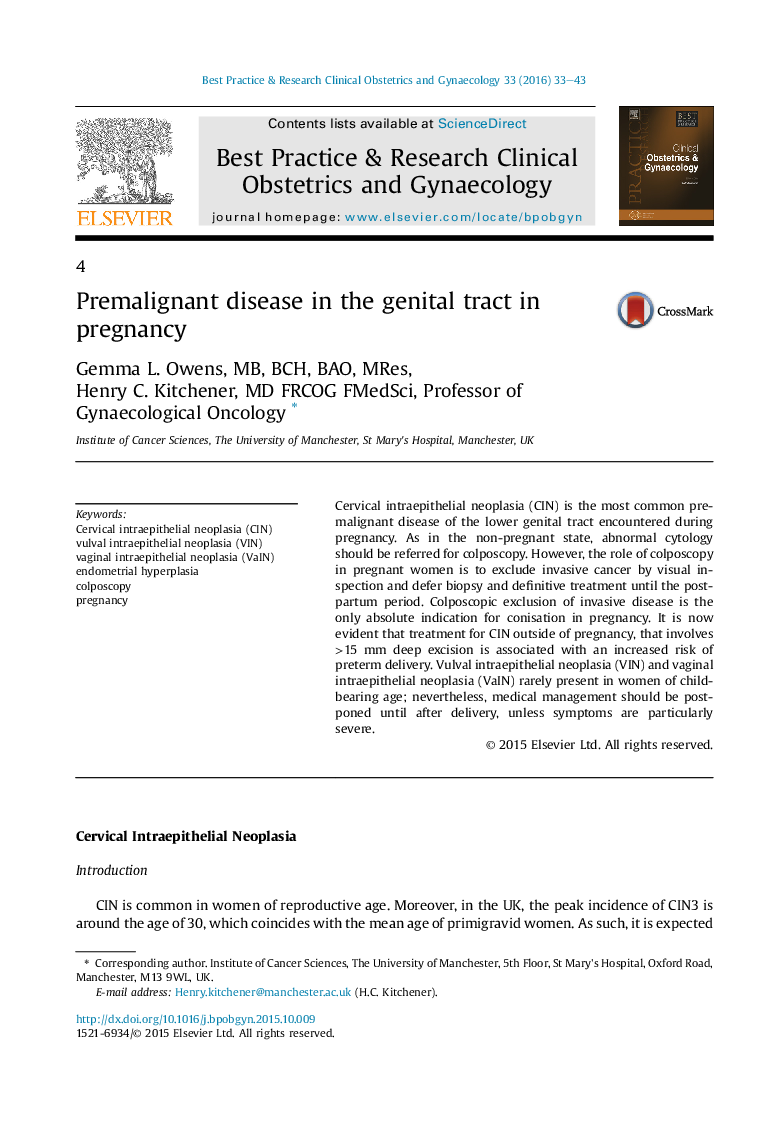| Article ID | Journal | Published Year | Pages | File Type |
|---|---|---|---|---|
| 3907407 | Best Practice & Research Clinical Obstetrics & Gynaecology | 2016 | 11 Pages |
•Indications for colposcopy during pregnancy are essentially the same as those for non-pregnant women.•The principal aim of colposcopy in pregnancy is to exclude invasive cancer.•Biopsies and definitive treatment should be deferred until the post partum period.•Excisional treatment for CIN can be associated with a higher risk of obstetric morbidity in subsequent pregnancies.
Cervical intraepithelial neoplasia (CIN) is the most common premalignant disease of the lower genital tract encountered during pregnancy. As in the non-pregnant state, abnormal cytology should be referred for colposcopy. However, the role of colposcopy in pregnant women is to exclude invasive cancer by visual inspection and defer biopsy and definitive treatment until the post-partum period. Colposcopic exclusion of invasive disease is the only absolute indication for conisation in pregnancy. It is now evident that treatment for CIN outside of pregnancy, that involves >15 mm deep excision is associated with an increased risk of preterm delivery. Vulval intraepithelial neoplasia (VIN) and vaginal intraepithelial neoplasia (VaIN) rarely present in women of childbearing age; nevertheless, medical management should be postponed until after delivery, unless symptoms are particularly severe.
